ambiguous genitalia, CAH (congenital adrenal hyperplasia), karyotyping, 17-hydroxyprogesterone
Ambiguous genitalia isn't a disease. It's a sign of a condition that affects sexual development, and it's referred to as a disorder of sexual development. Most common cause of ambiguous genitalia is CAH [1-3].
In our institute we came across 3 paediatric cases of ambiguous genitalia, which were planned for surgery and during their investigation work up they were discovered to be cases of congenital adrenal hyperplasia. So, we would like to discuss some of the presentations of CAH as ambiguous genitalia [4].
Case 1: A 8-month-old female patient weight 6 kg presented in opd with single opening in vestibule (no separate urethral and vaginal opening) (Figures 1-5).
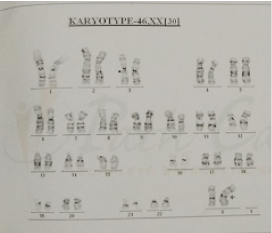
Figure 1. Image showing Karyotype.
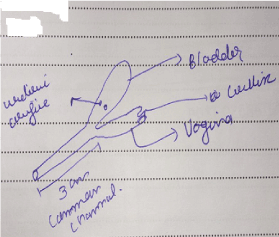
Figure 2. Genitoscopic finding.
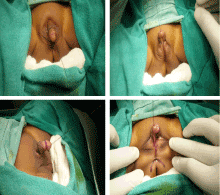
Figure 3. Before genitoplasty.

Figure 4. Immediate post operation period.
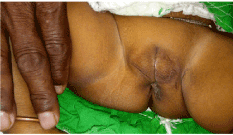
Figure 5. After 3 months of operation
Case 2: A 6-year-old patient presented to opd with complaint of ectopic urethral opening with undescended testes (Figures 6 and 7).

Figure 6. A 6-year-old patient presented to opd with complaint of ectopic urethral opening with undescended testes.
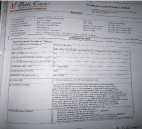
Figure 7. Image showing patient’s report.
Case 3: A 3-day-old, 3 kg, patient presented with ambiguous genitalia (Figure 8).
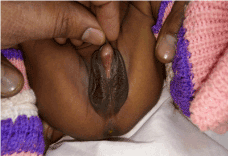
Figure 8. A 3-day-old, 3 kg, patient presented with ambiguous genitalia
Hormonal assessment of 17 hydroxy progesterone along with karyotyping was done in all these cases besides routine haematological and preanaesthetic work up (Table 1).
Table 1. Table showing comparative investigations.
|
Case 1 |
Case 2 |
Case 3 |
Usg abdomen |
normal |
An elongated isoechoic soft tissue posterior to urinary bladder and anterior to rectum. |
normal |
Urine (R &M) |
normal |
normal |
normal |
karyotype |
44+xx female |
44+xx male |
44+xx female |
17 hydroxy progesterone |
increased |
increased |
increased |
All these cases were discovered to be of CAH. They were started on steroid treatment as per paediatrician and endocrinologist and 2 of them were operated for genitoplasty.
All cases of ambiguous genitalia should be evaluated for medical disorder CAH because the treatment plan changes with apparent sex of the patient and after karyotyping whether to consider baby or child as a male or female. We in our study tried to highlight these features only. Our results like previous studies also suggest early and keen observation in patients of ambiguous genitalia.
In each case presenting with ambiguous genitalia in children, CAH should be kept as a differential diagnosis.
- Ogilvie CM, Crouch NS, Rumsby G, Creighton SM, Liao LM, et al. (2006) Congenital adrenal hyperplasia in adults: A review of medical, surgical and psychological issues. Clinical Endocrinology (Oxf) 64: 2-11.
- Hughes I (2005) Prenatal treatment of congenital adrenal hyperplasia: Do we have enough evidence? Treatments in Endocrinology 5: 1-6.
- Merke DP, Bornstein SR (2005) Congenital adrenal hyperplasia. Lancet 365: 2125-2136. [crossref]
- Krishnan S and Amy BW. Ambiguous genitalia in new born.
2021 Copyright OAT. All rights reserv








